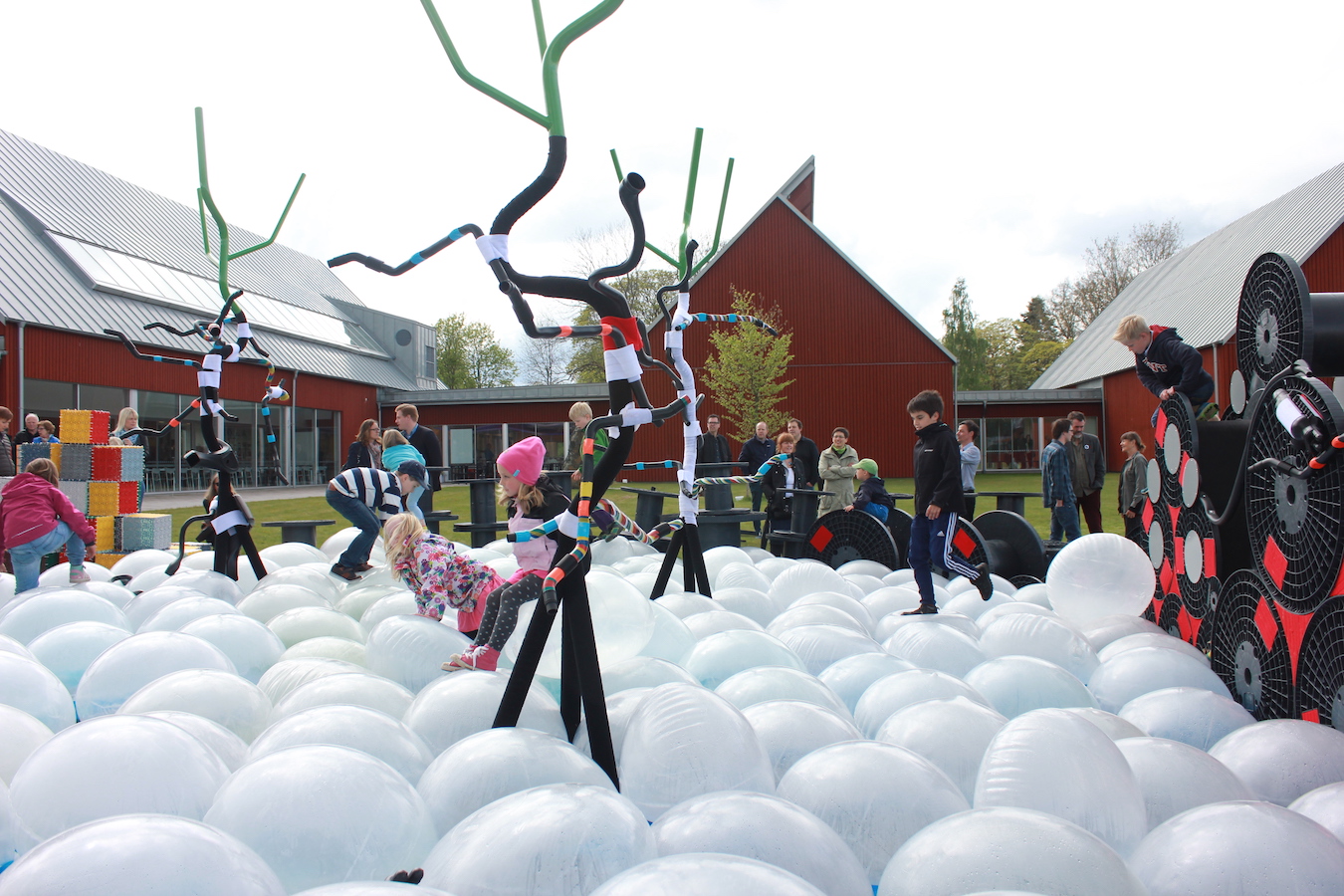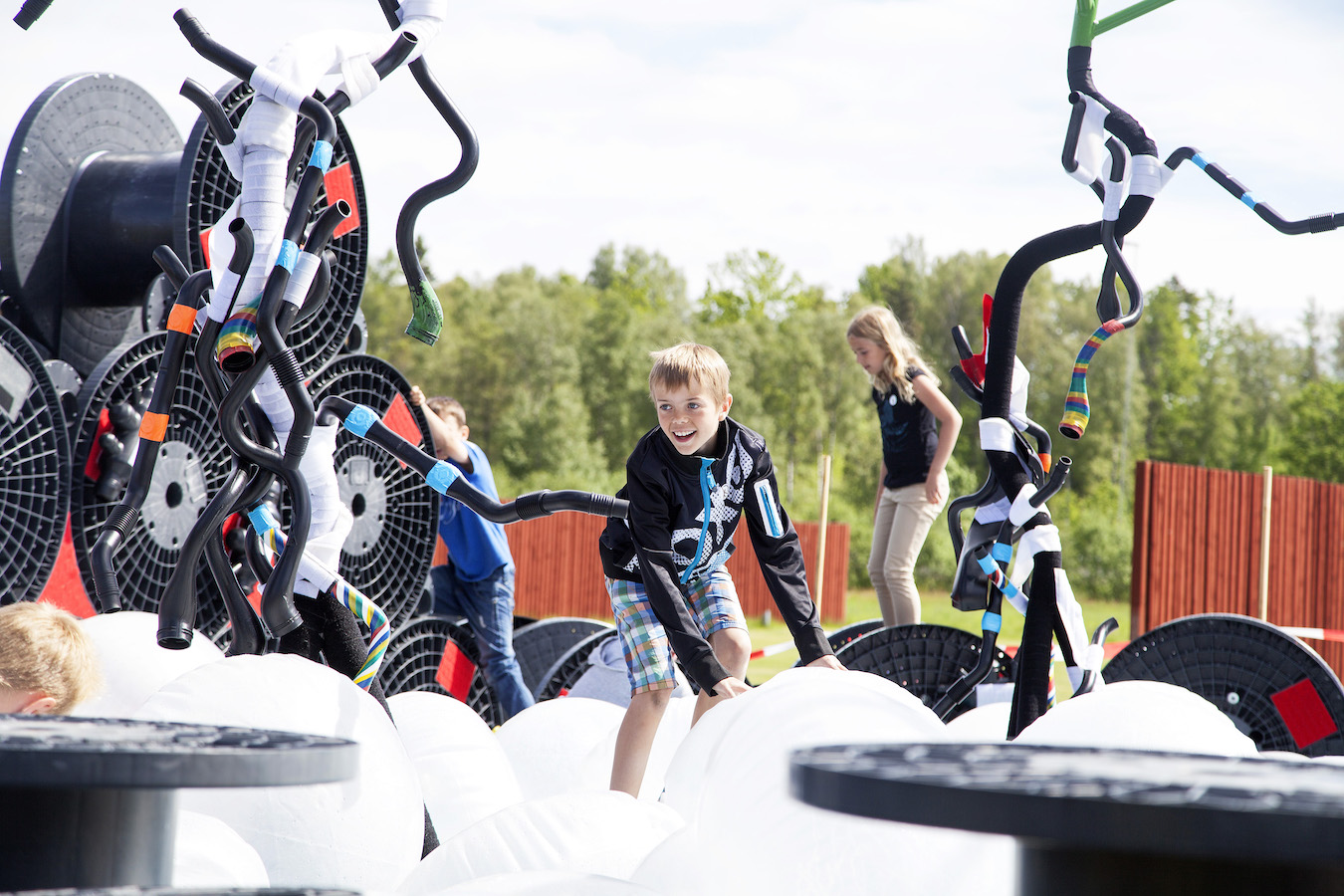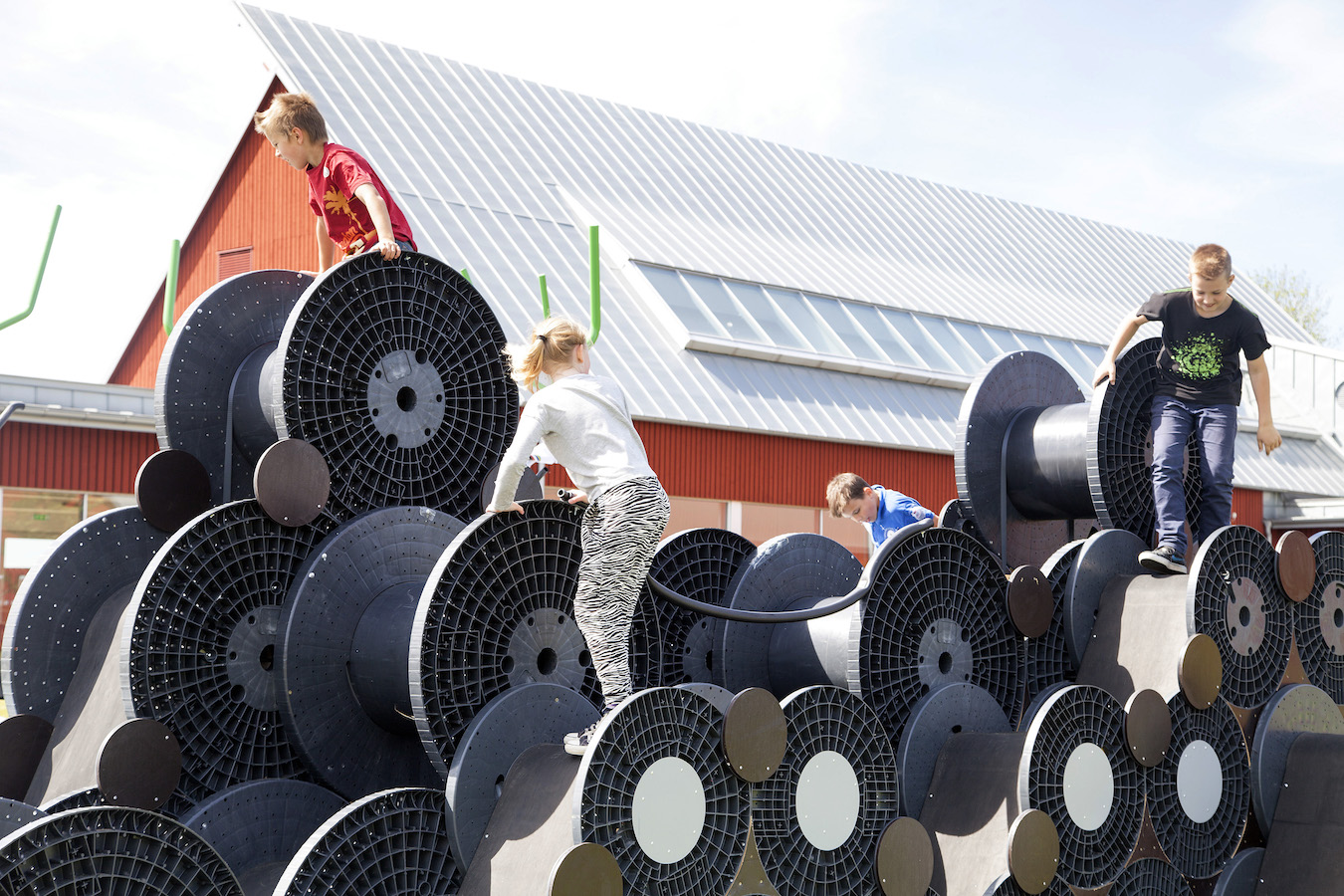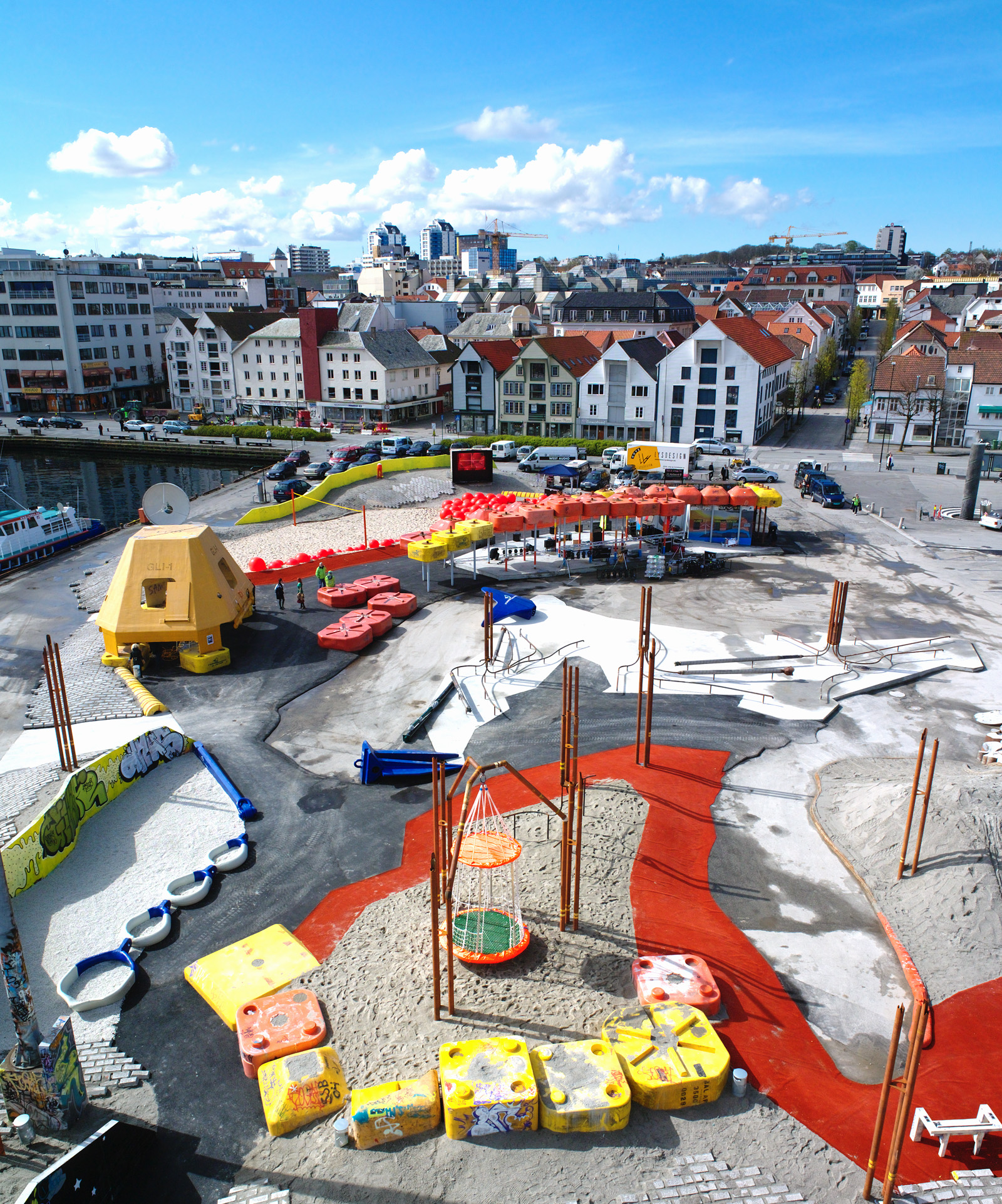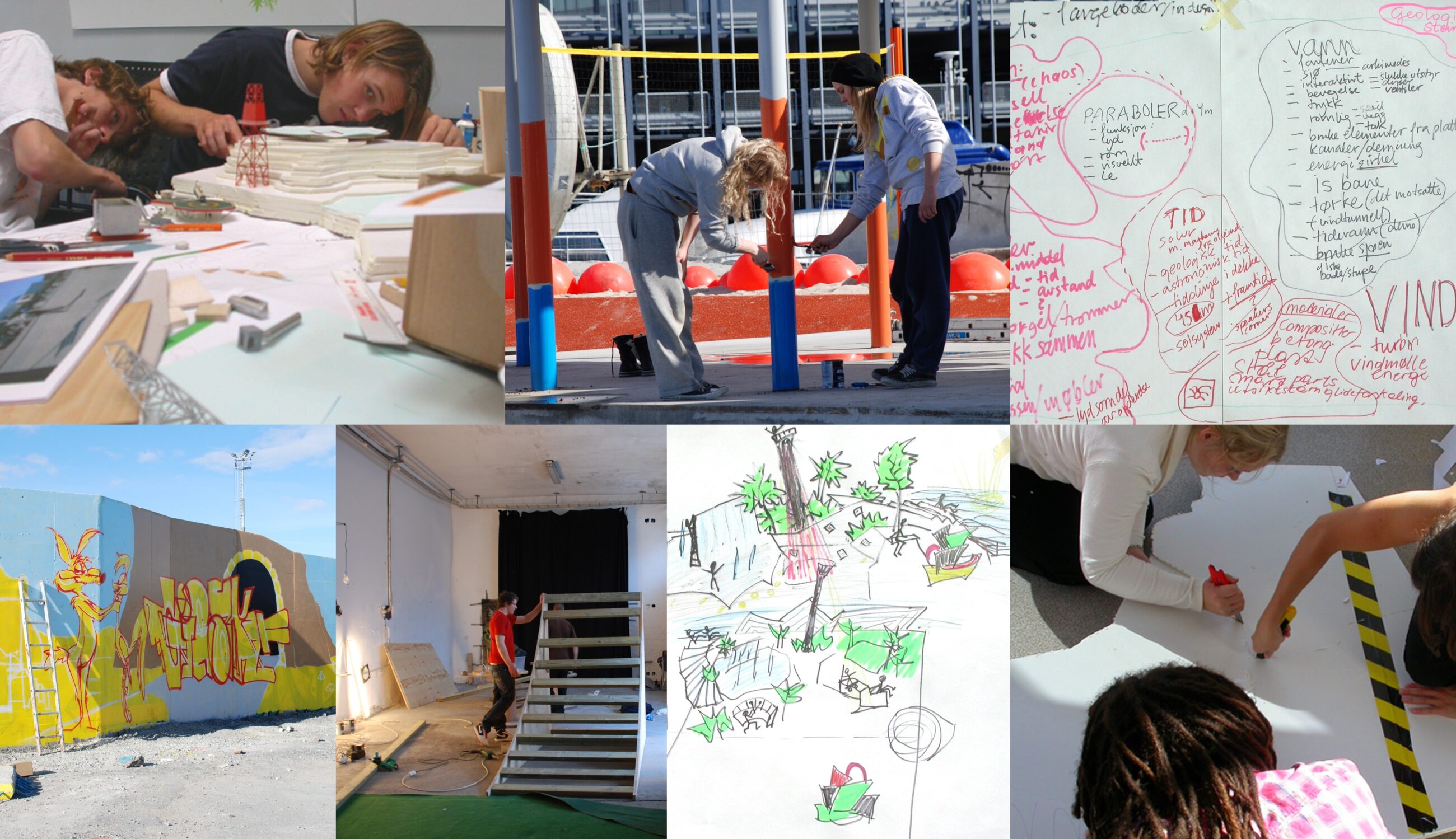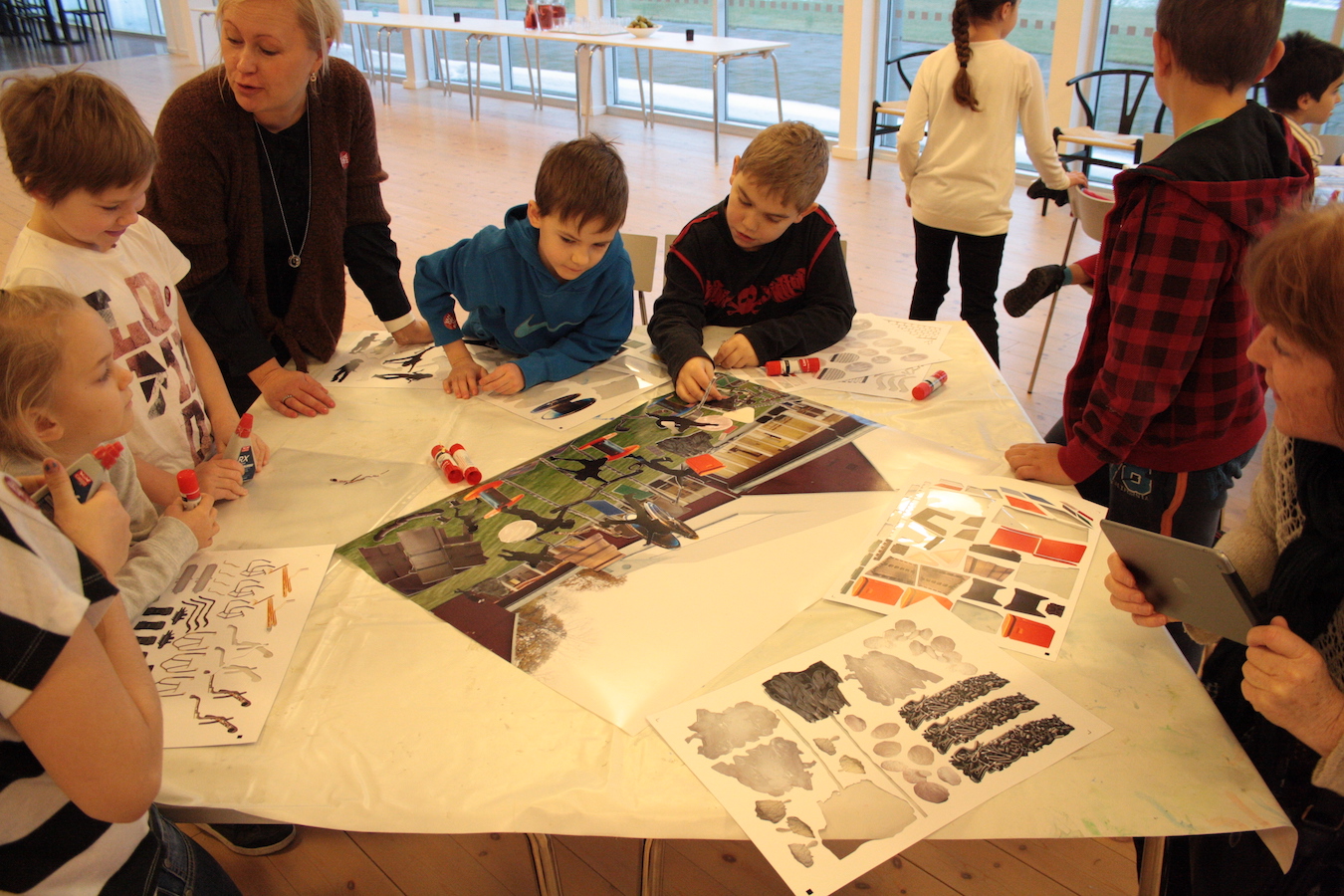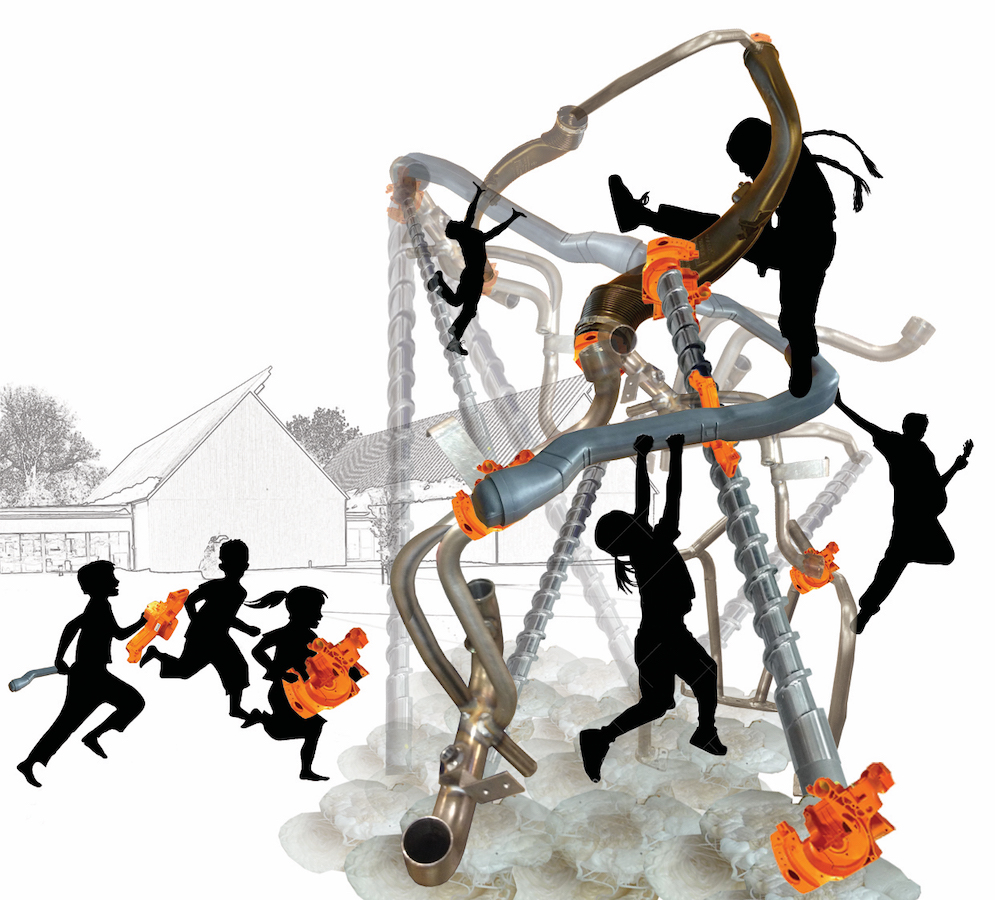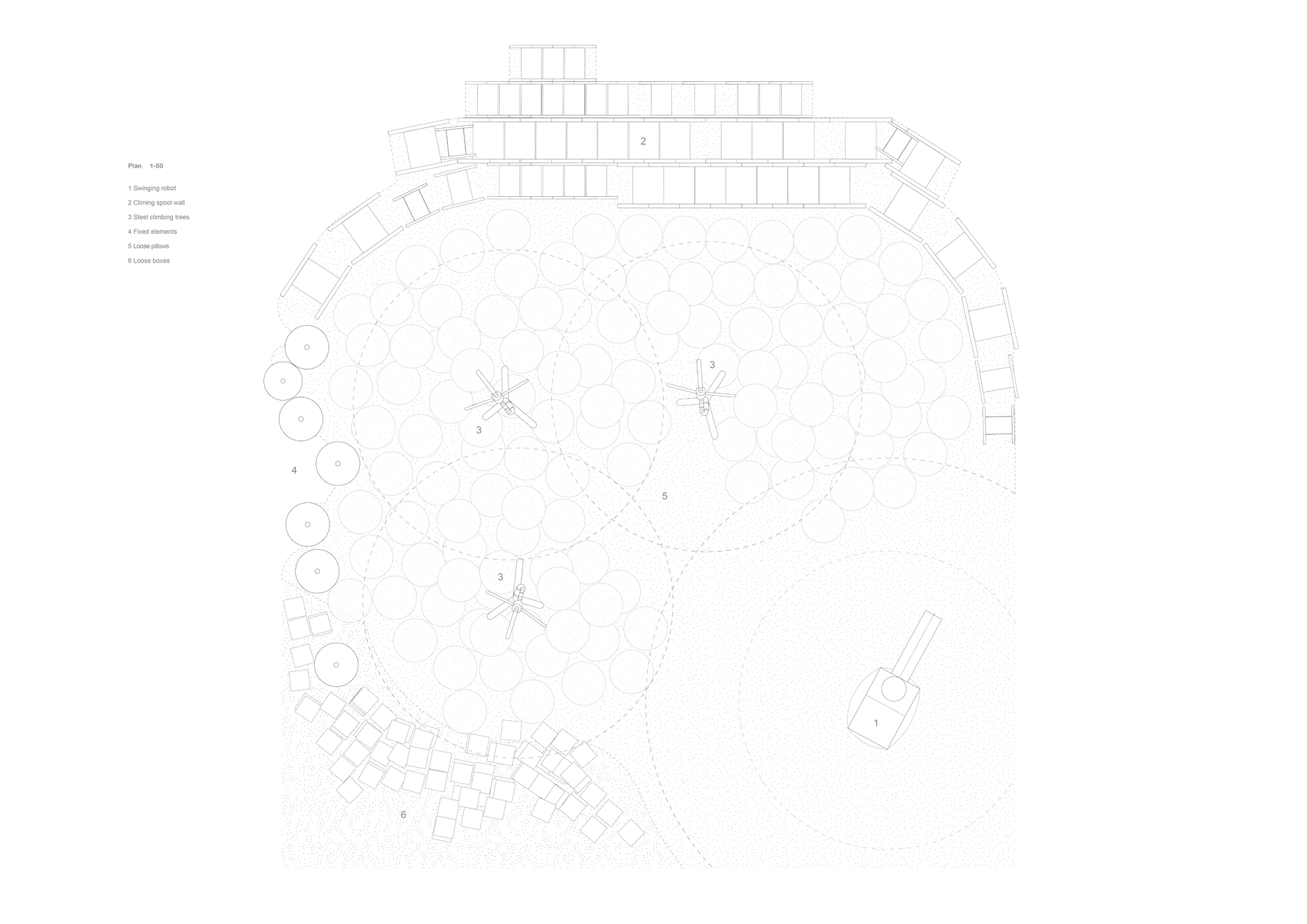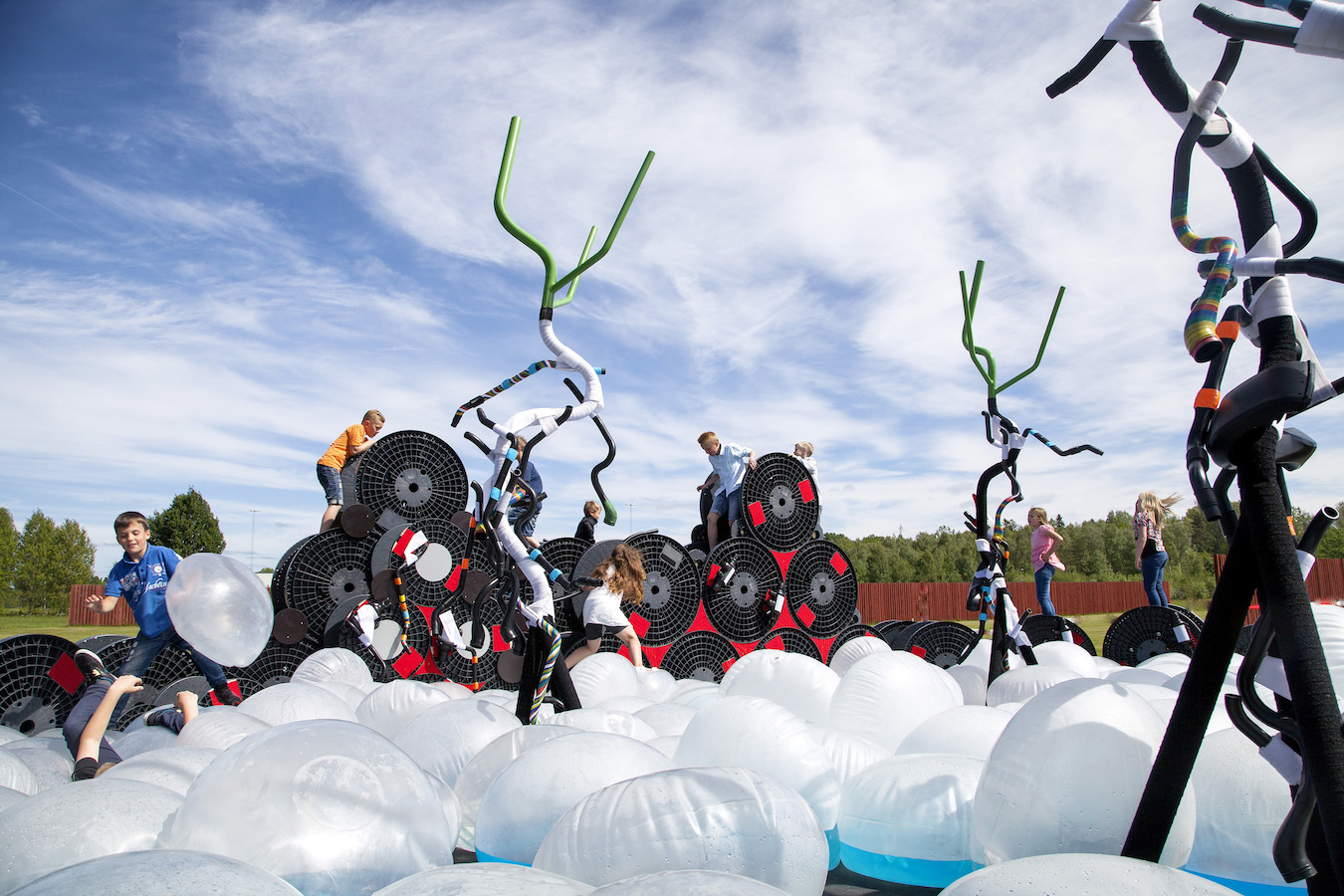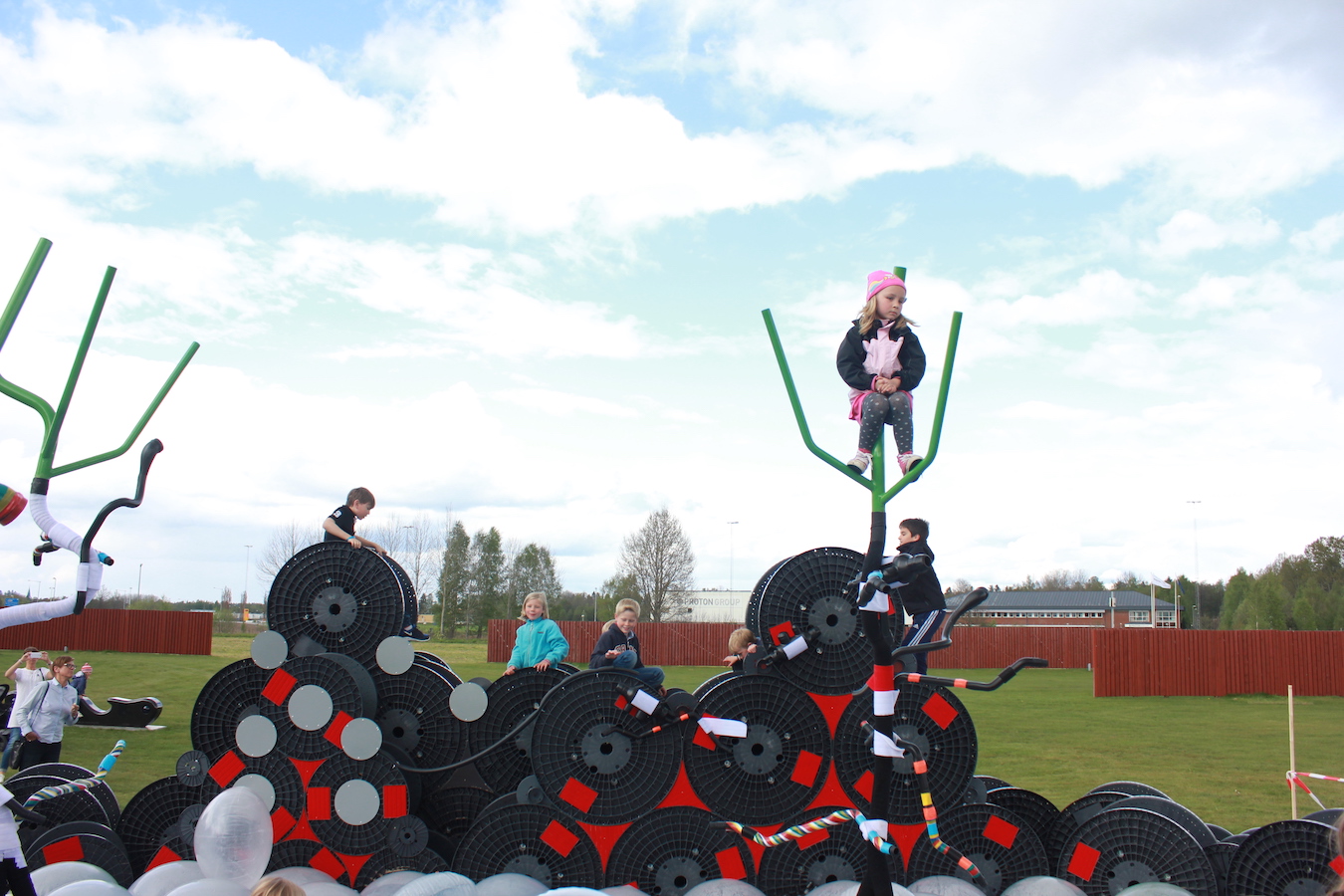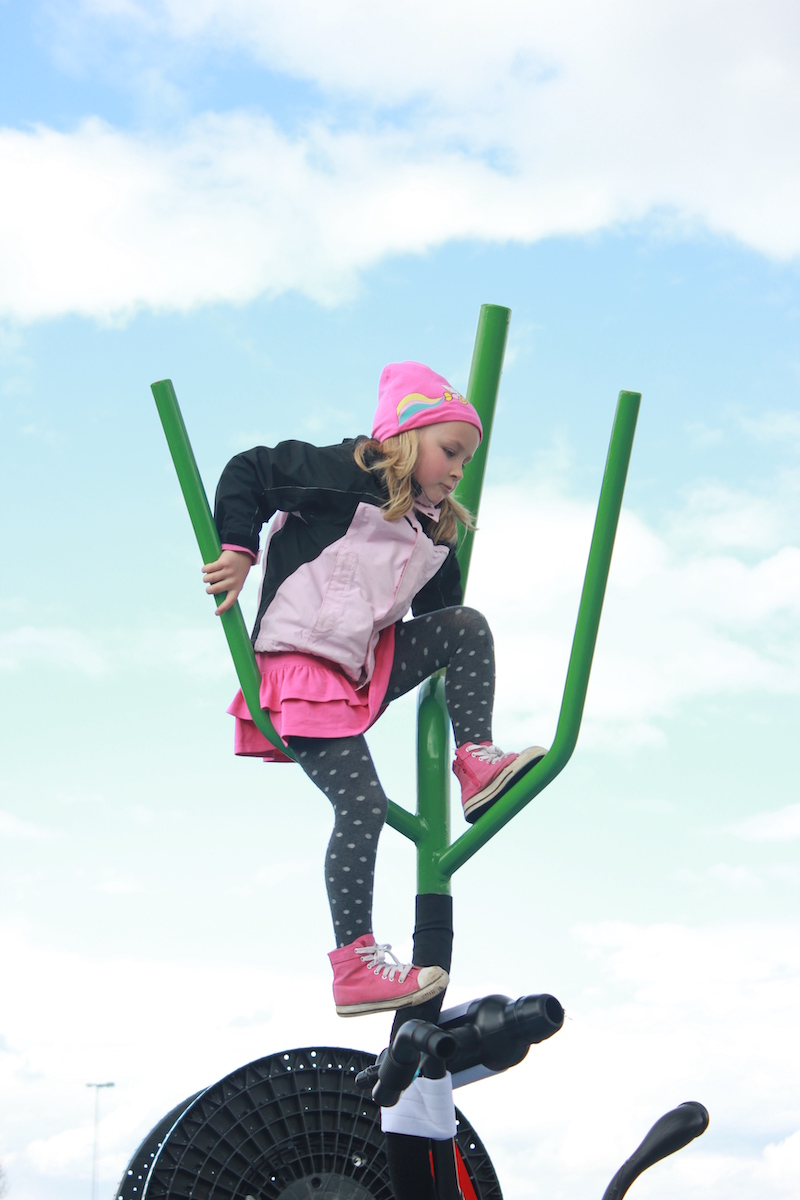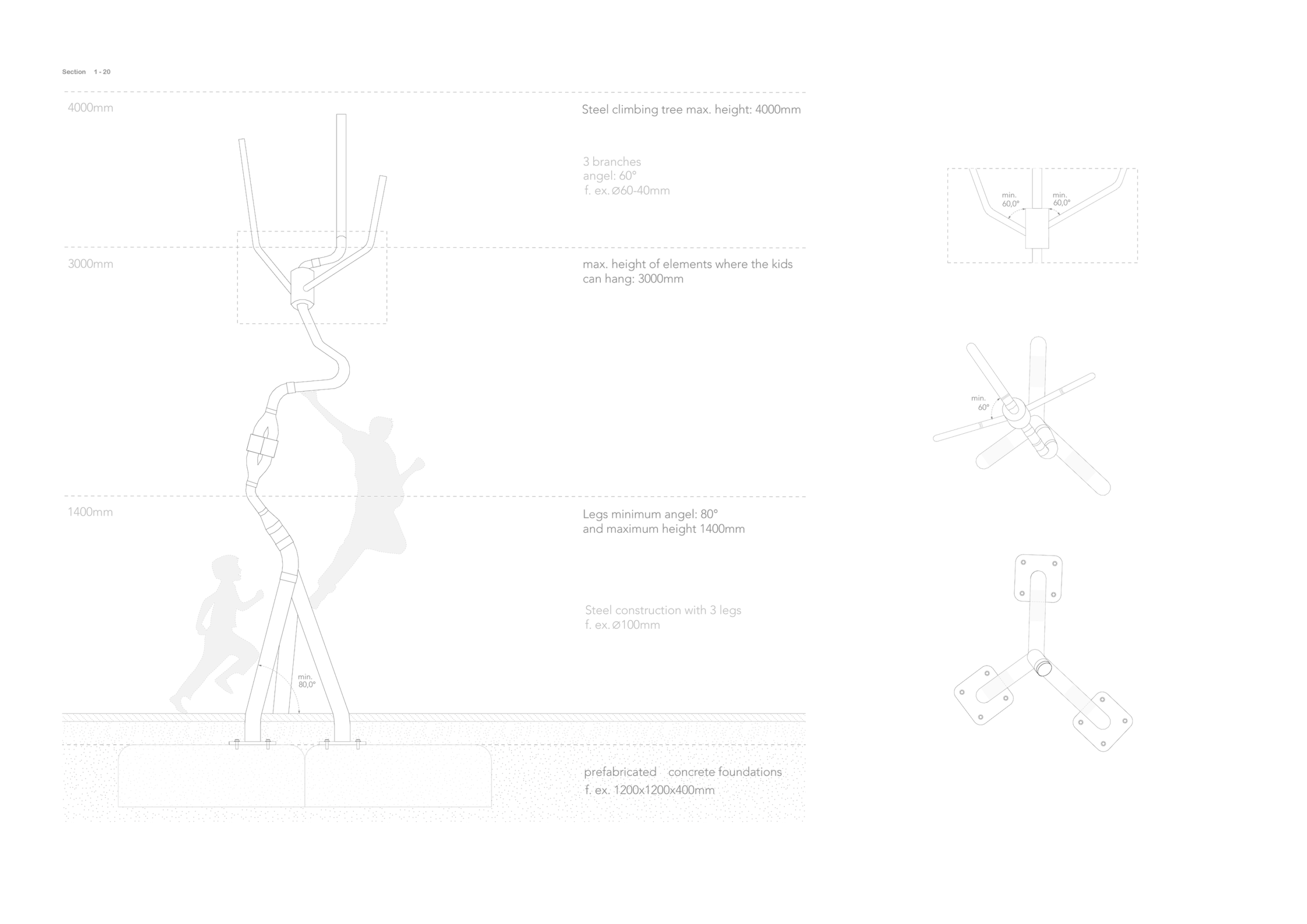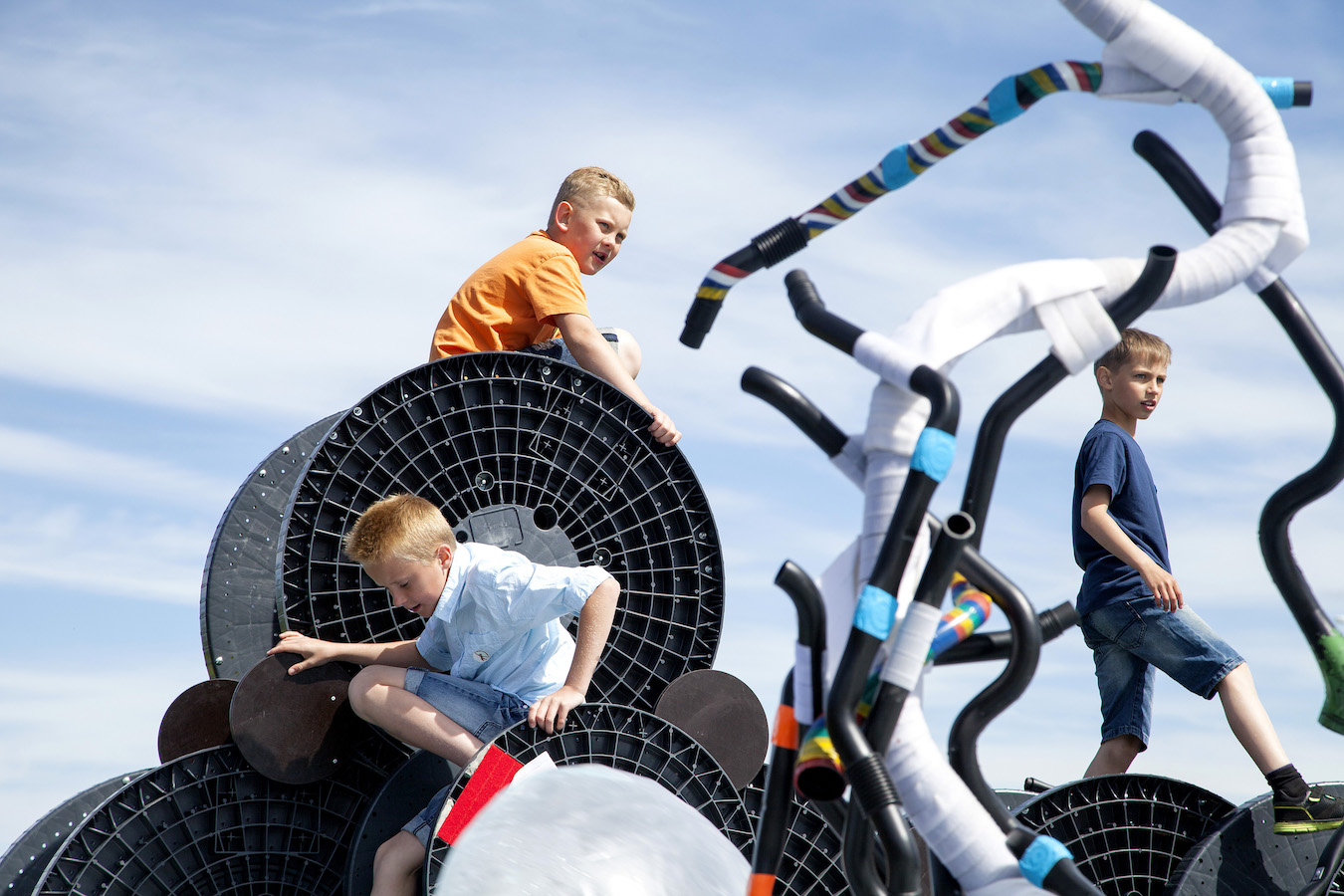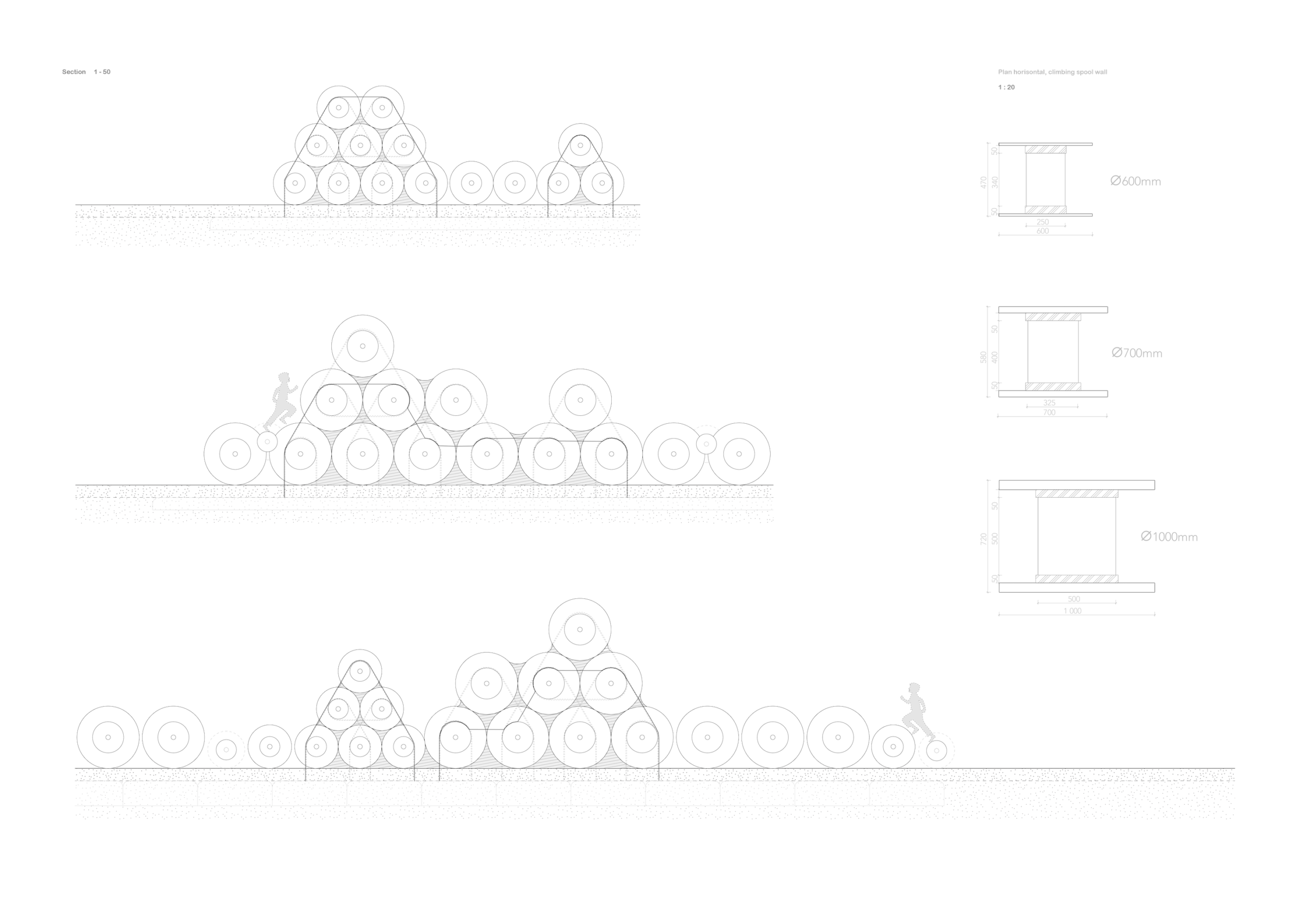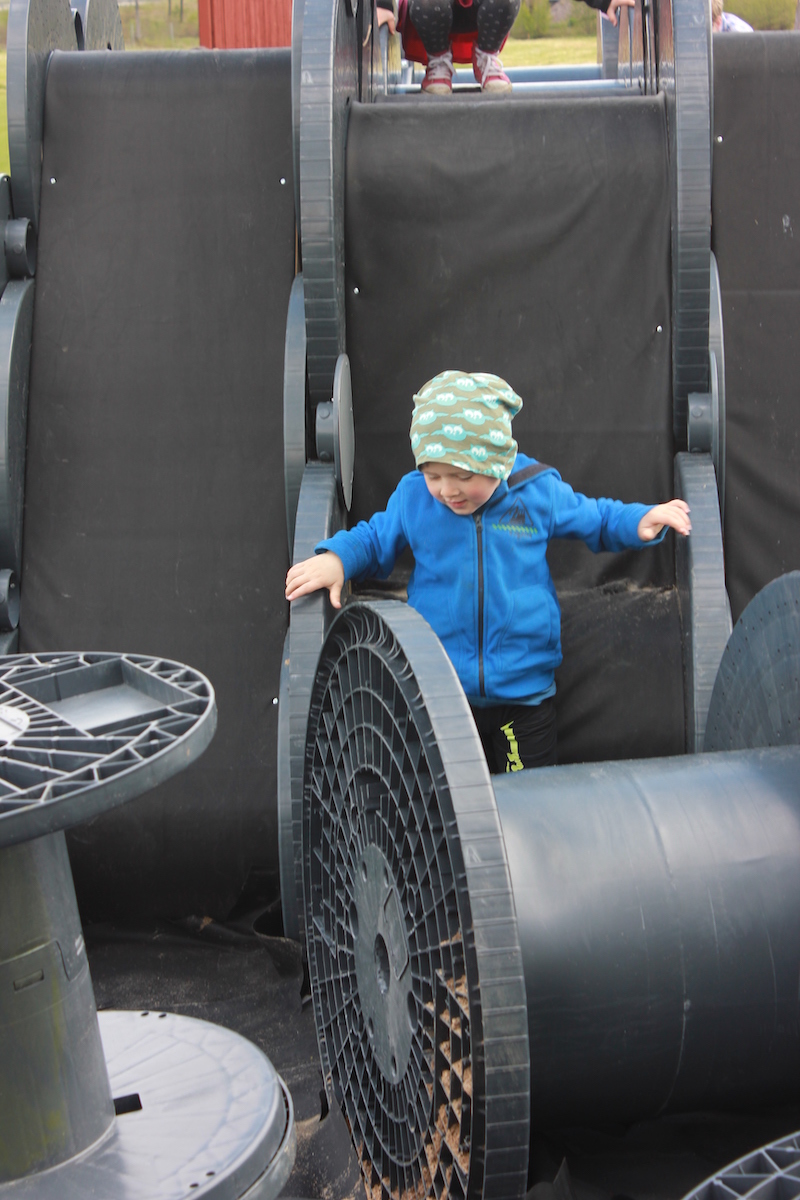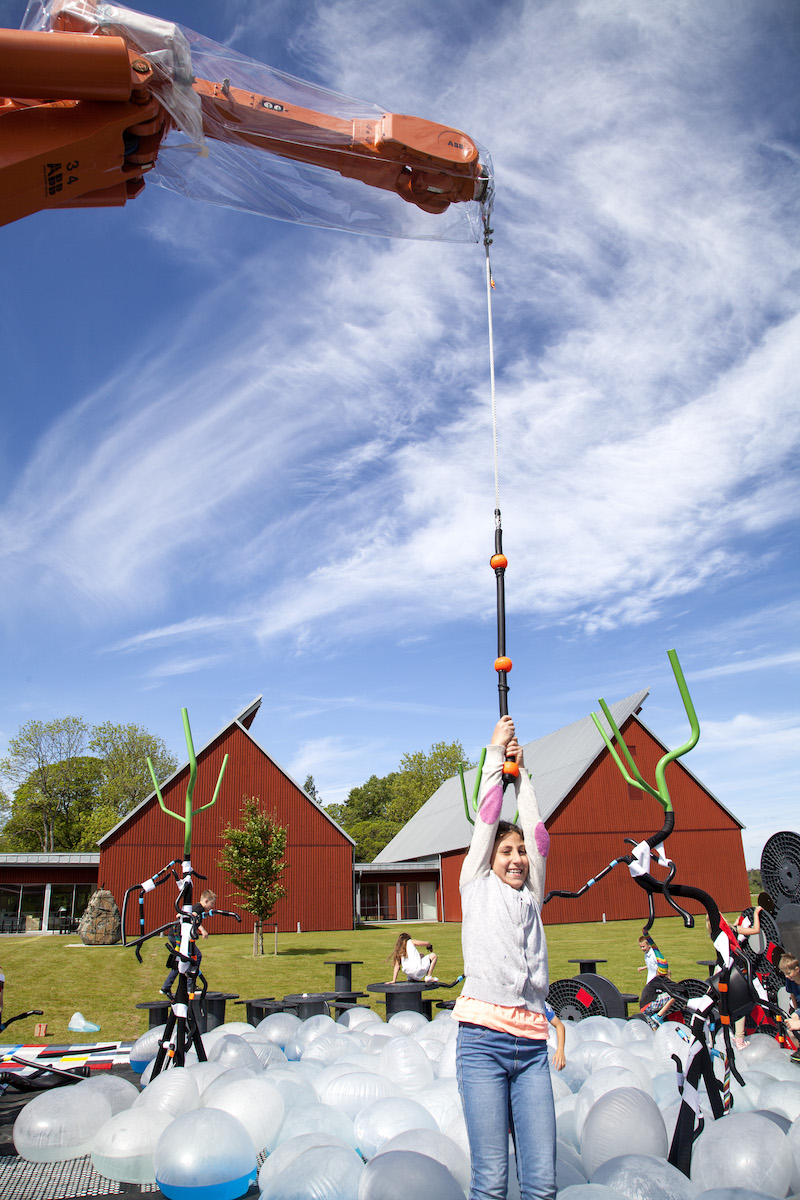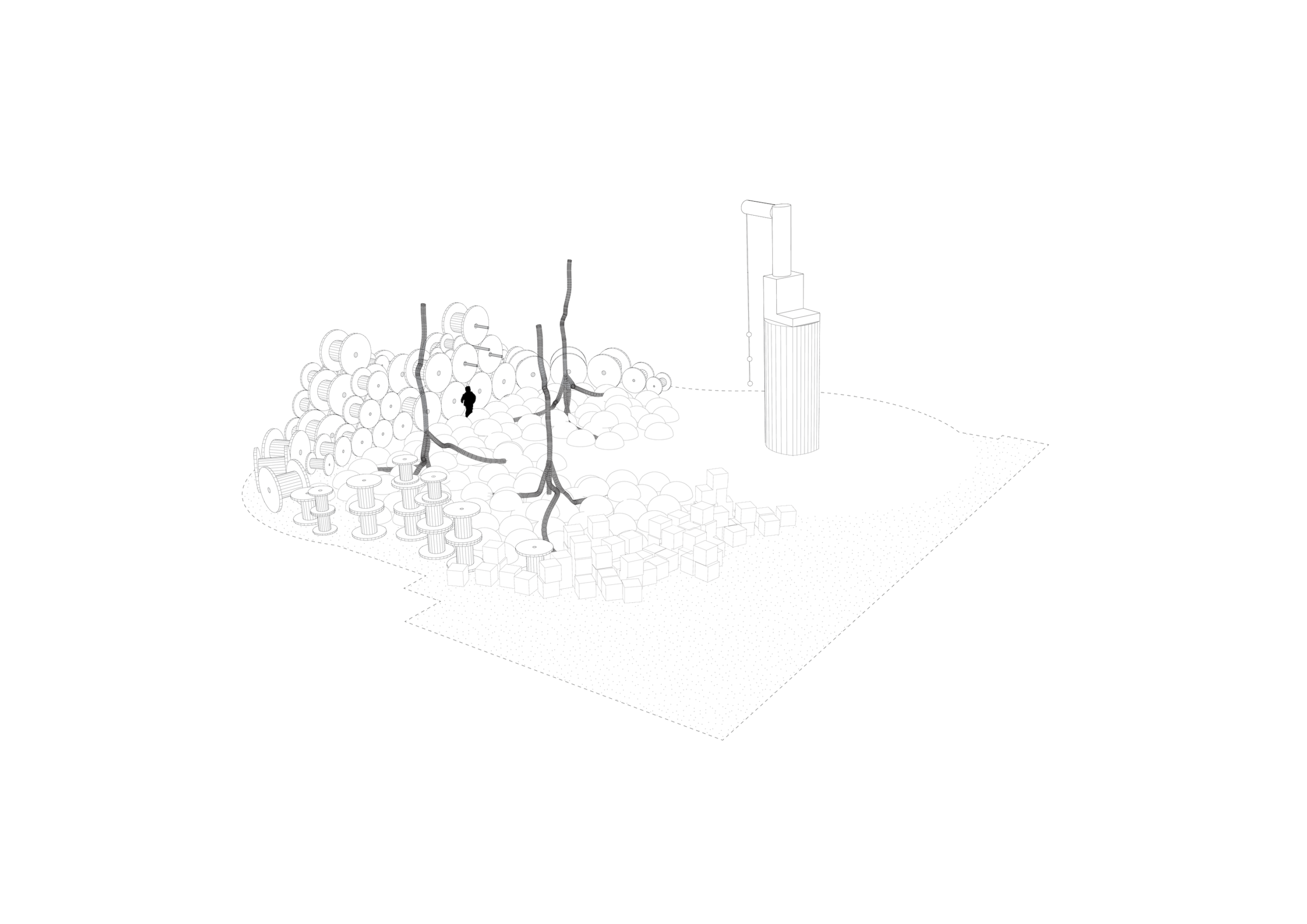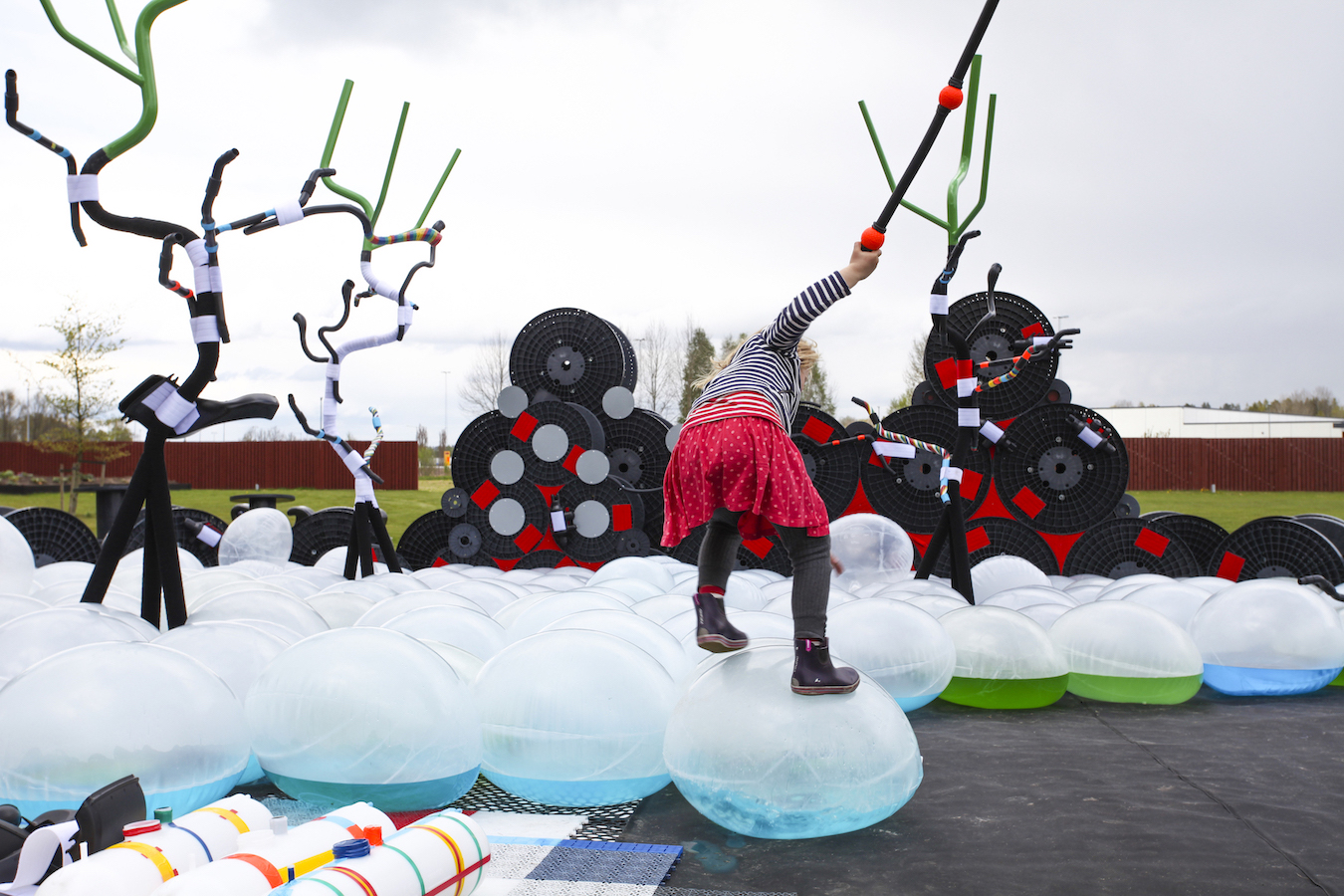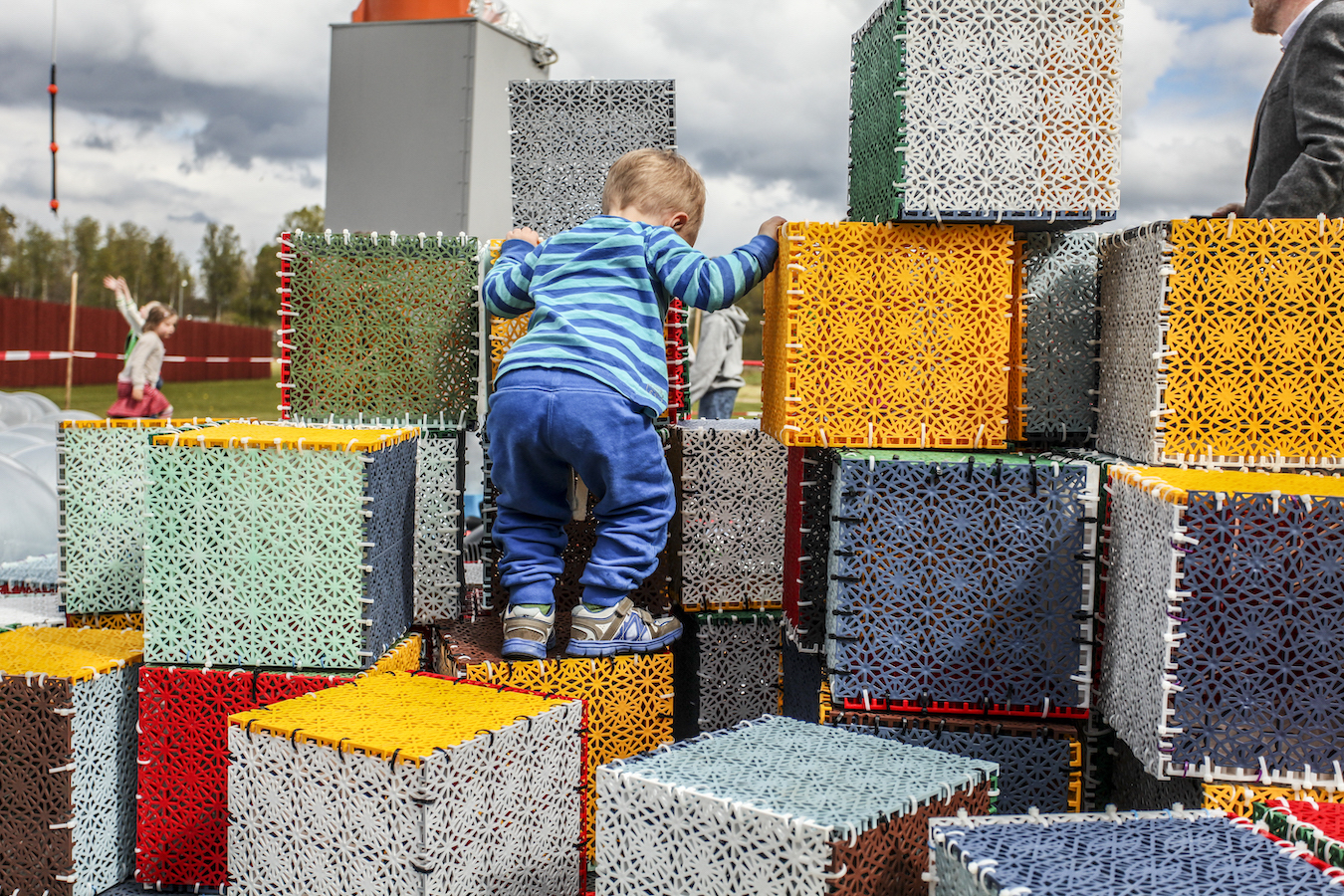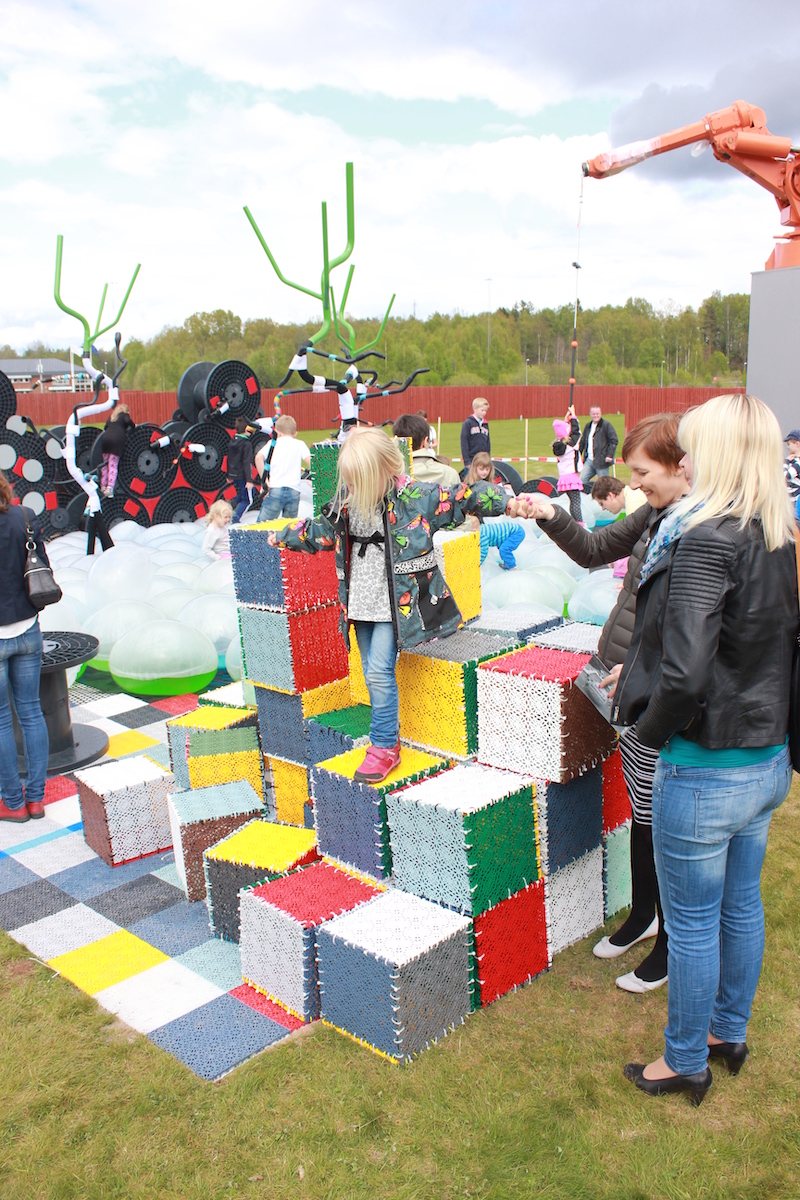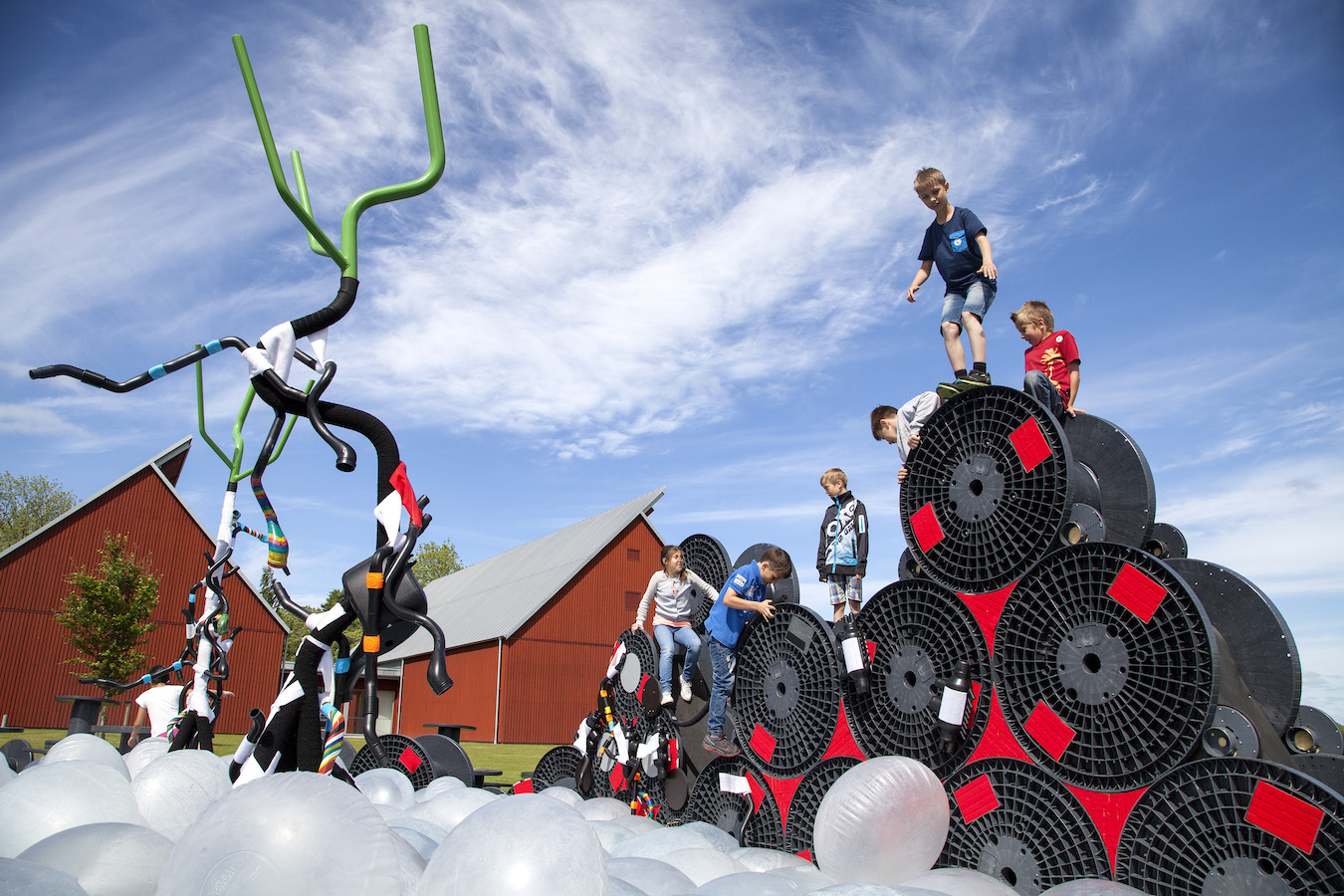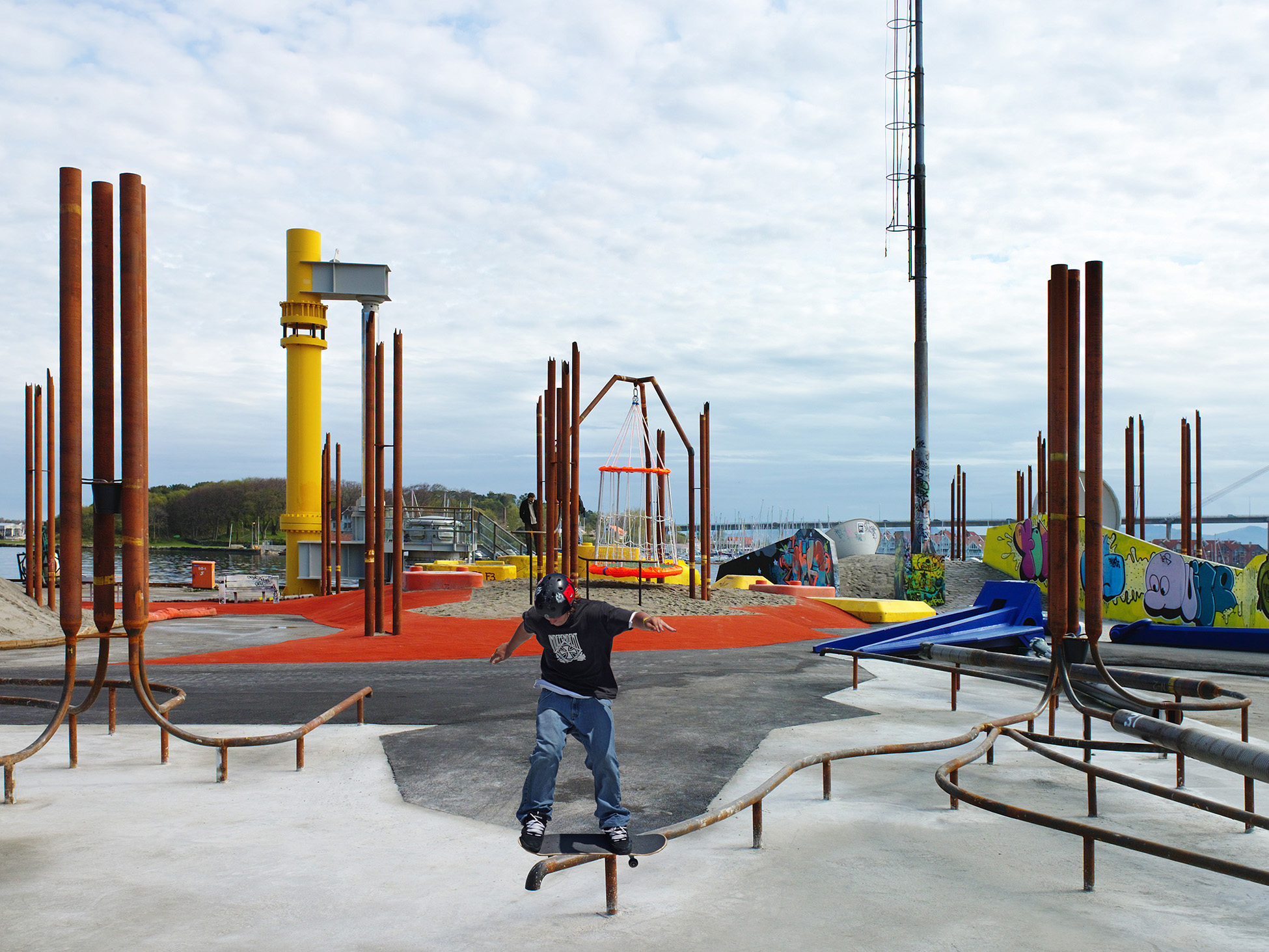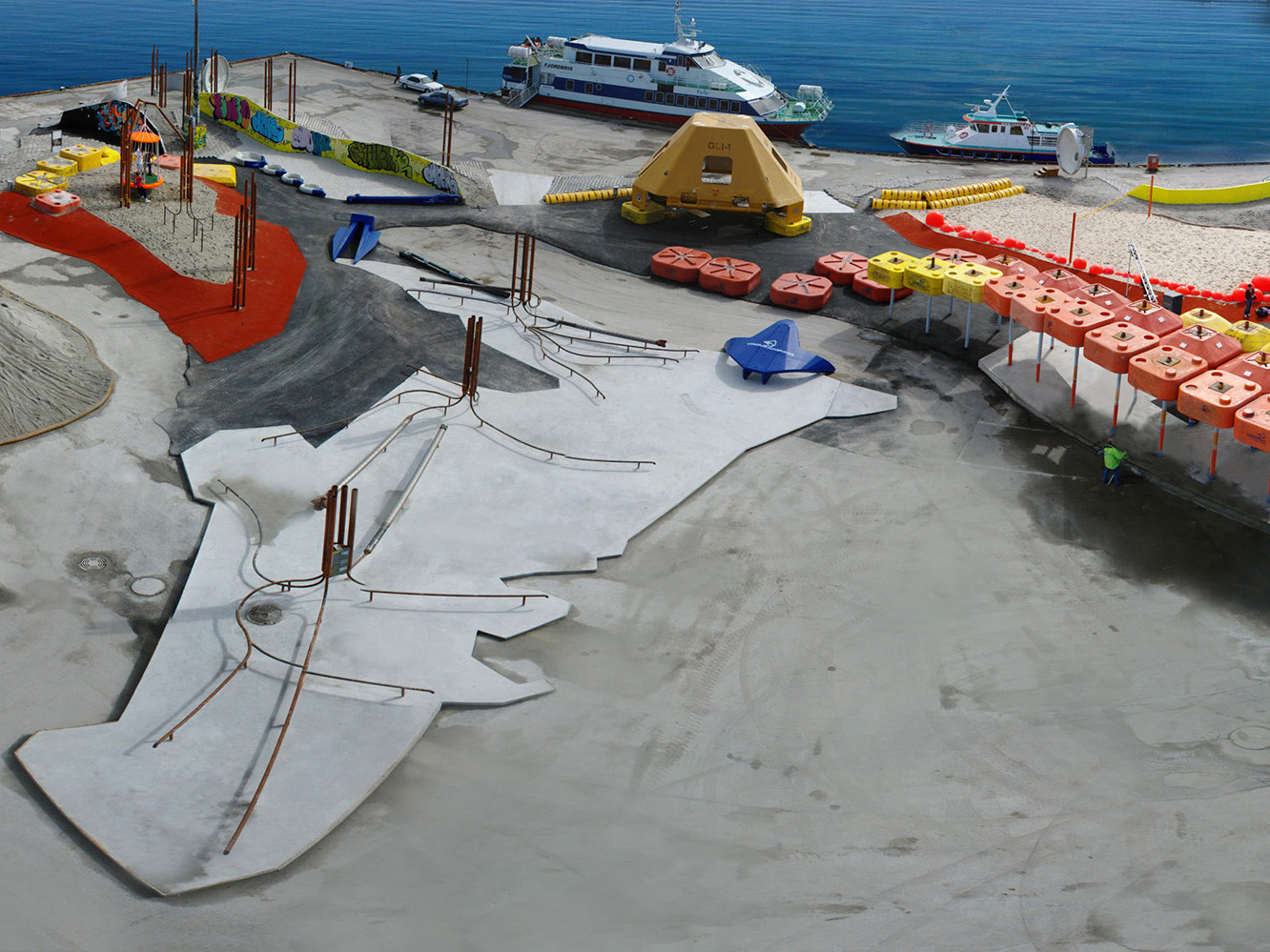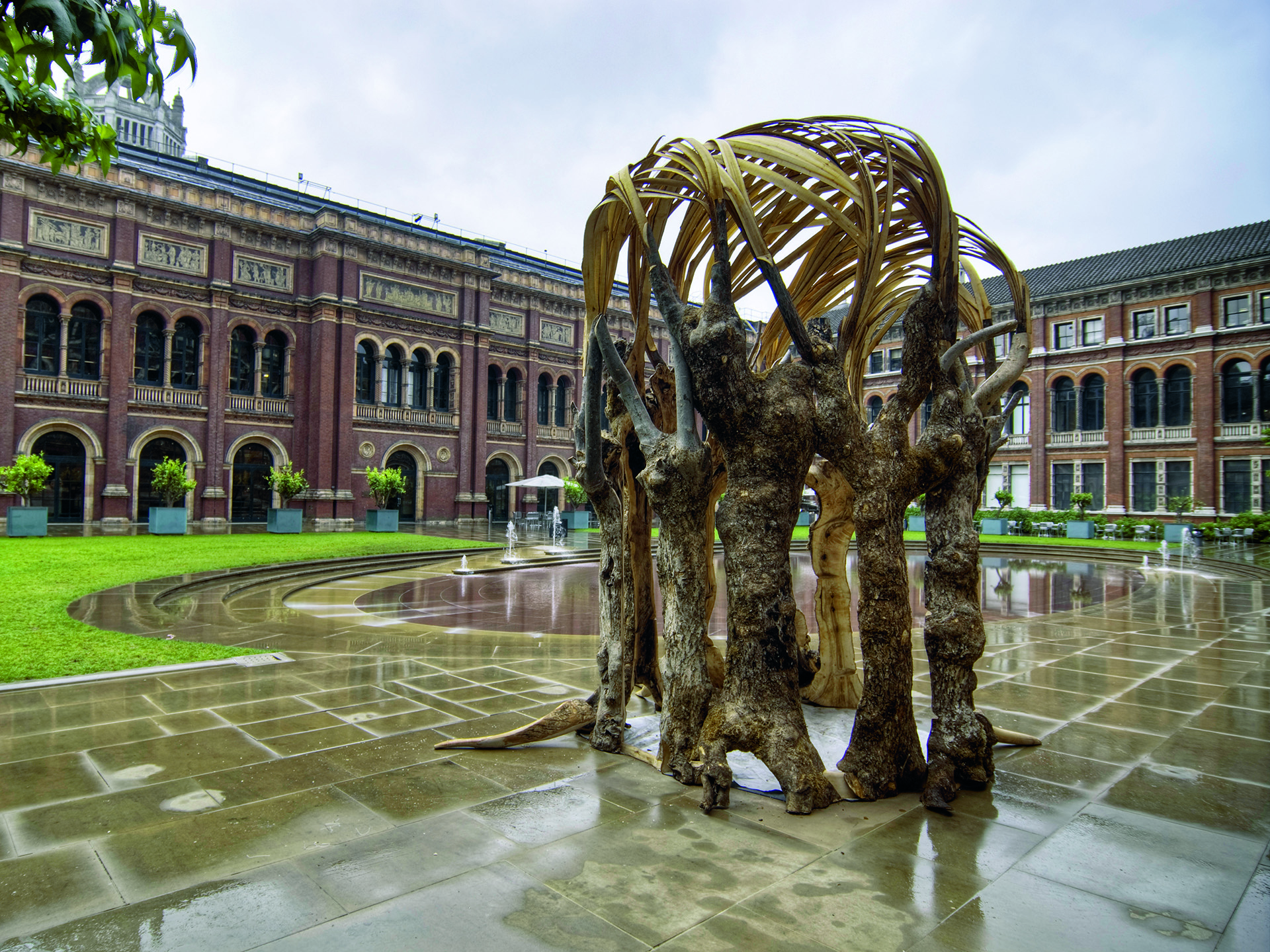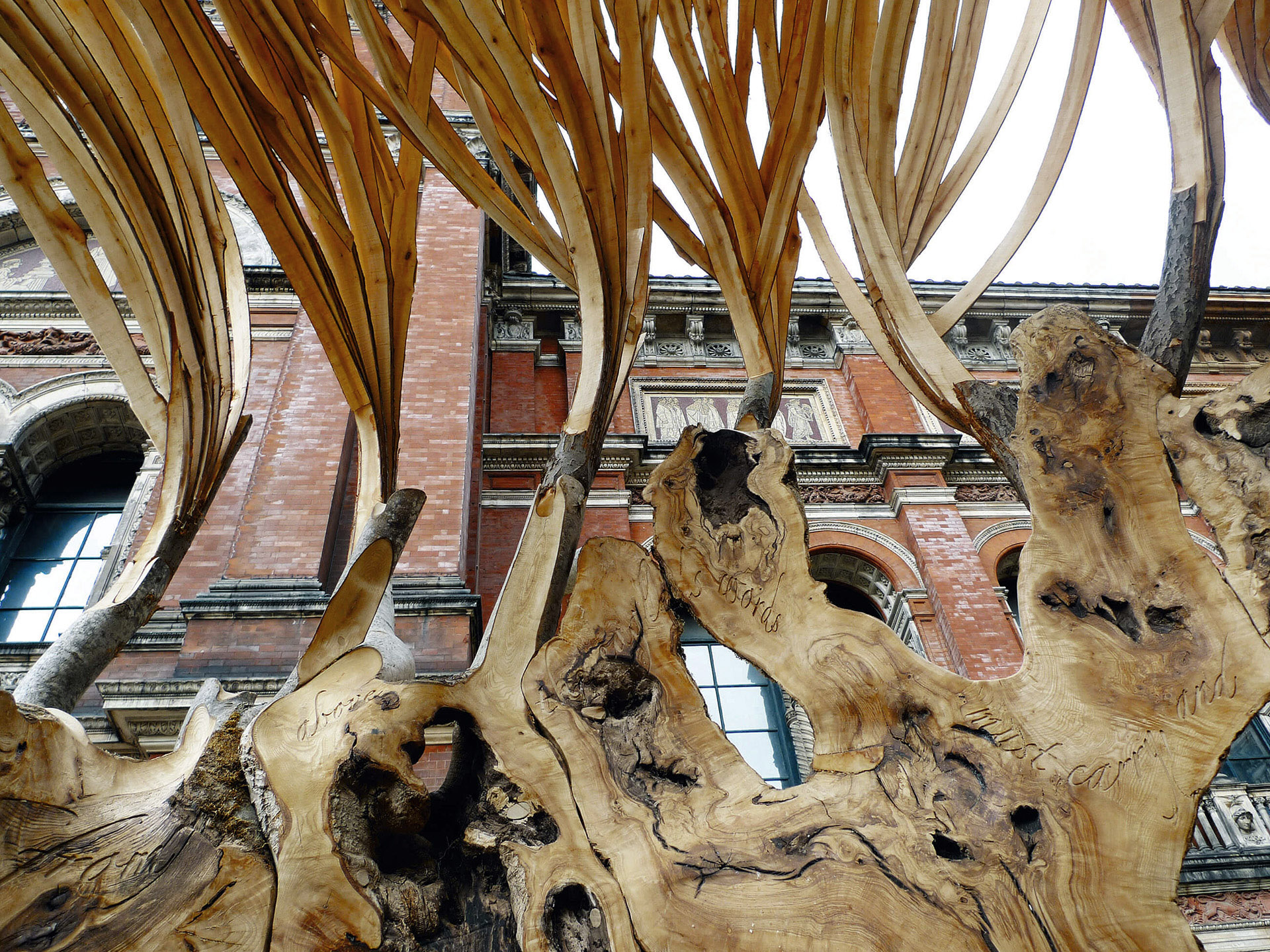Vandalorum Museum, Playful Matters
Relational Architecture for Children
What we understand as relational architecture is based on a mindset and an attitude, a set of tools that helps us to co-create with people and non-human resources of the environment related to a project. To find and to include these resources as an active part in the design process is what we describe as relational design.
Helen & Hard was invited by the Vandalorum Museum in Varnamo to make a play-space in the museums outdoor area in the summer of 2014.
The Playful Matters playground forms the main installation in the exhibition “Barnets århundre”, which is a sequel to MoMA’s exhibition, titled “Century of the Child”. The exhibition brings together for the first time the most progressive Nordic design, architecture, and art for children from the 20th century until today.
Background – The Geopark
The Geopark project sought to synergise the expertise and material resources of the offshore industry with a sustainable urban design for an activity park in the city centre of Stavanger. Schoolchildren and youth were engaged in both the programming and in the creation of the park.
As a new addition to the exhibition, “Century of the child” we wanted to give children in Värnamo a similar chance to engage in a local potential playground.
The rich and various industries in Värnamo show a whole register of how different natural resources are being processed to become things we use in our everyday life. As such, they become the perfect, hands-on learning opportunities about materials, about their properties and lifecycles, where they come from, how they are processed, and how or where they end up.
Although Värnamo has these rich and proliferate industries, it is not something the inhabitants of the region are very aware or proud of. As the factories are lying on the outskirts of where people live, they are not part of the visible surroundings of everyday life. The fact that many of them produce parts of products and not the finished whole also makes it less tangible for people to build an identity around them.
An important part of the exhibition was to involve school children in the creative development of the playground, based on the various products produced in Värnamo. Local school classes participated in three workshops. On the first day they drew a “play tree”. On the second day they made a collage of an entire playground. And on the last day in the final workshop, they wrote stories about the “magic factory in the year 2050”.
In the last week before opening, the children were invited to help “build” parts and colour the playground.
We wanted the project to give school children in Värnamo a new awareness of the industrial production that exists in the area, focusing on the lifecycles and potentials of the raw materials and play. We started off by studying Värnamo and its specific material household and industries. Thereafter, with this new awareness, we wanted to co-create the playground using this material household.
The task of Helen & Hard was to facilitate a process for this to be realised at the Vandalorum museum as a temporary exhibition. The workshops with school classes triggered a direction for the design, and the classroom activities involving story making contributed to an imaginary framework for the playground as a future play factory.
The installation involved an assemblage of materials and construction parts collected from the material rich area of world leading industry and factories in the area of Småland. The parts were gathered and prepared to build landscapes and different kinds of frameworks to climb and play into and onto. A host structure was set up and fixed to define a maximum height and the territory for the construction site. This host structure consisted of steel-climbing trees, a climbing spool wall and a swinging robot. The structure was tested, documented and secured to follow the common laws for playgrounds.
The playground was partly a construction site itself – consisting of loose parts connected by Velcro to the host elements, movable building blocks and jumping pillows that could be rearranged and built together by children. The idea of a loose parts playground was to enhance creativity and engage children more actively in the making and changing of things they play with. Through building children gain more interaction with the material properties such as weight, temperature, and tactility. The loose parts formed a part a continuous transformation in the exhibition period.
The challenge for Helen & Hard was to define the frames and the rules of the game, and to secure the building parts so that safety was guaranteed while building and playing. The result was seen and experienced as an attractor for children of all ages to unfold their embodied energy and curiosity, resulting in a structure that triggered play.
Team

Siv Helene Stangeland
Partner / Creative Director
Reach out to Siv to learn more about the project.
